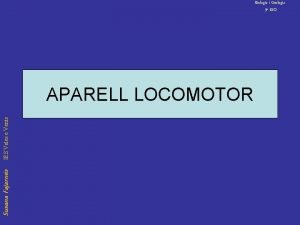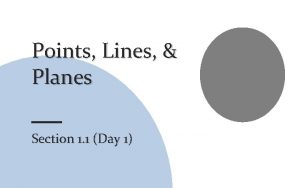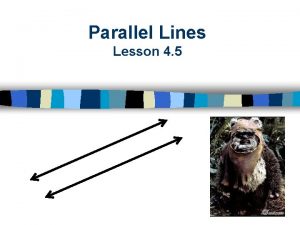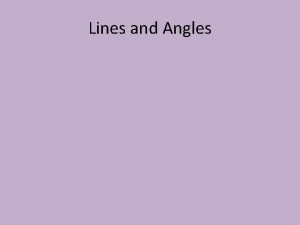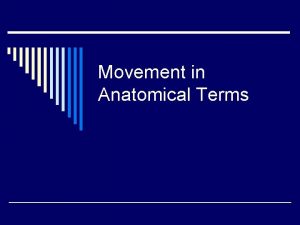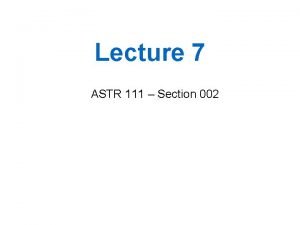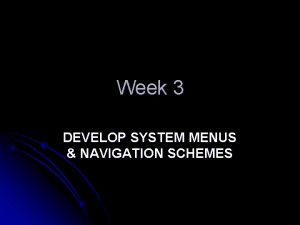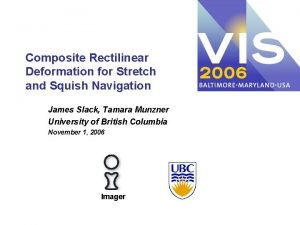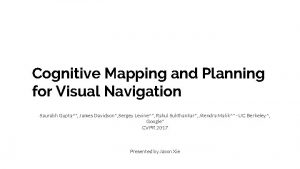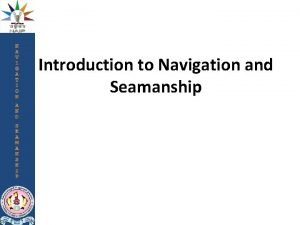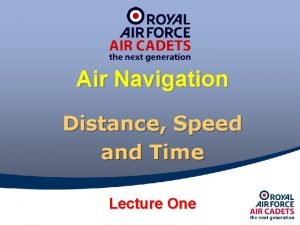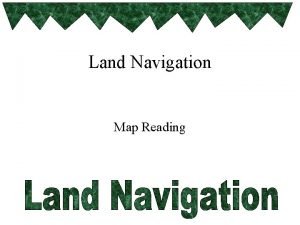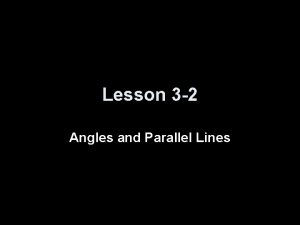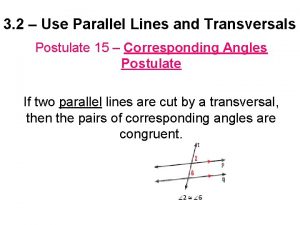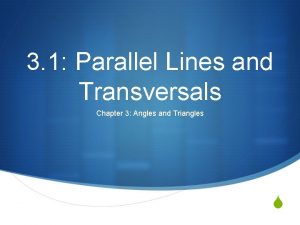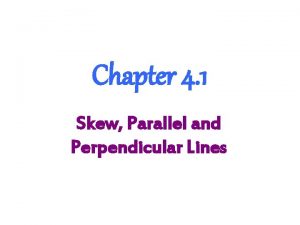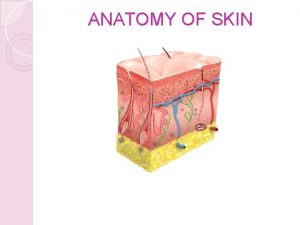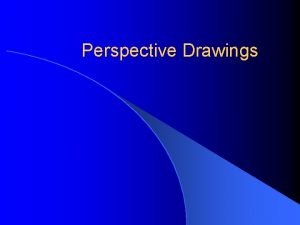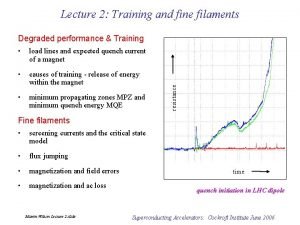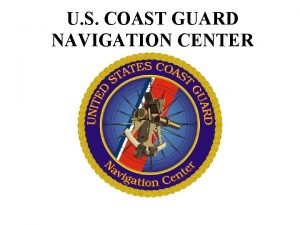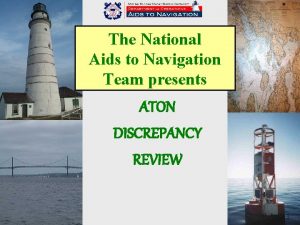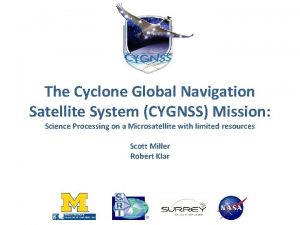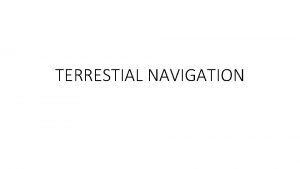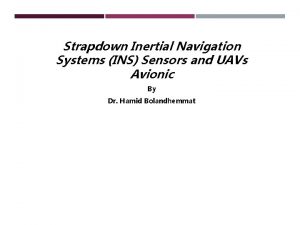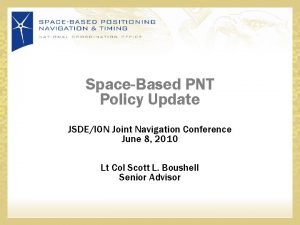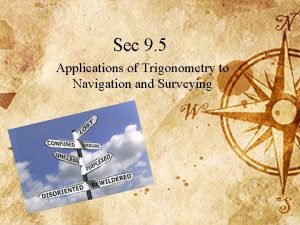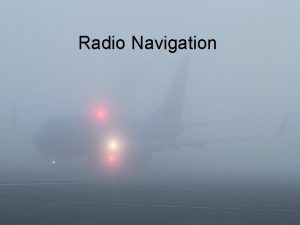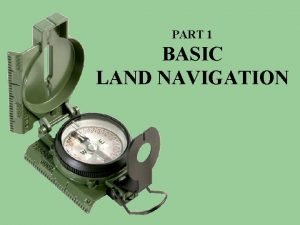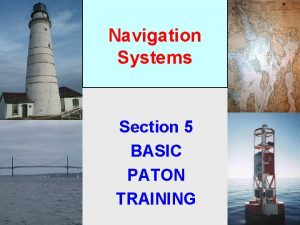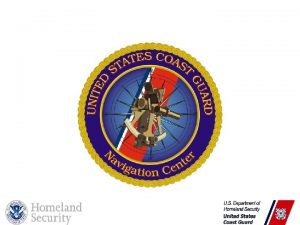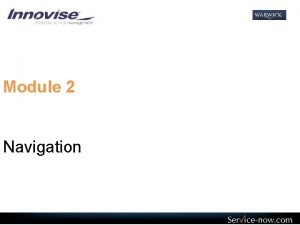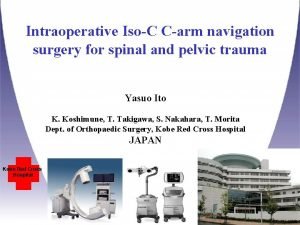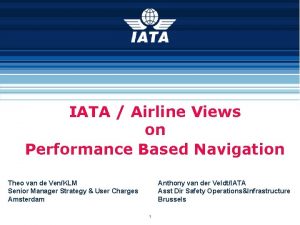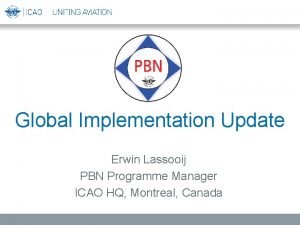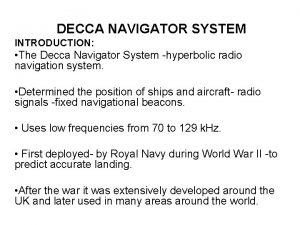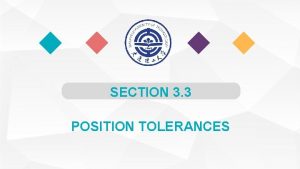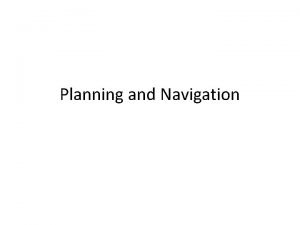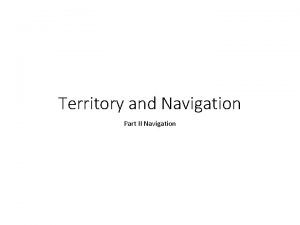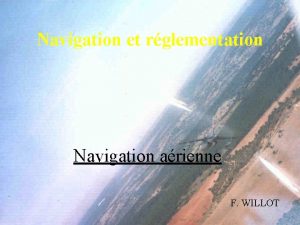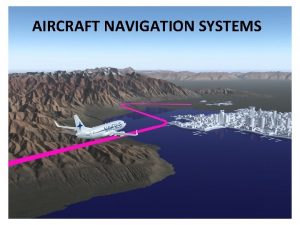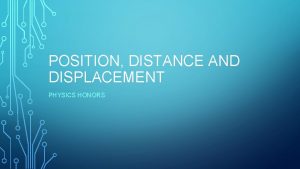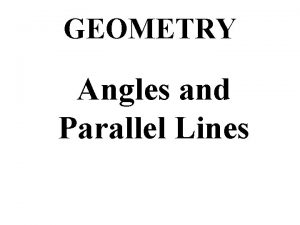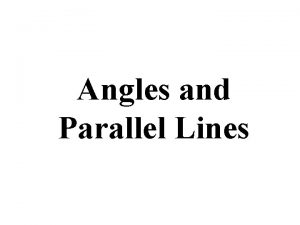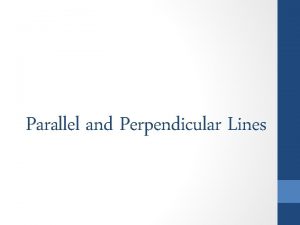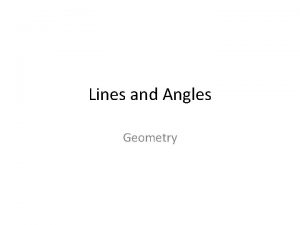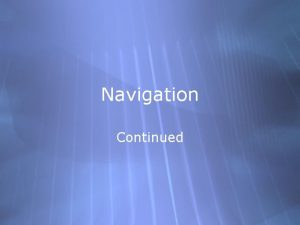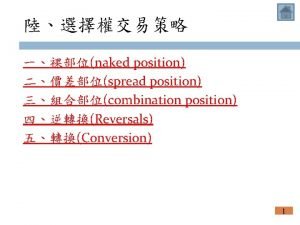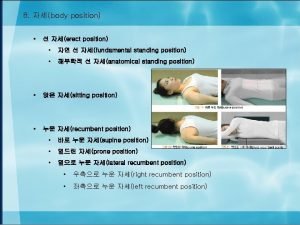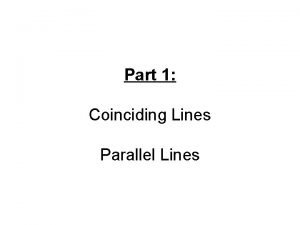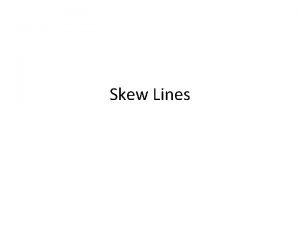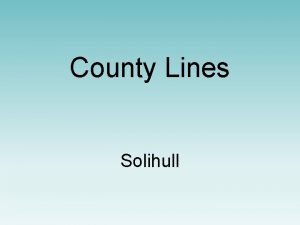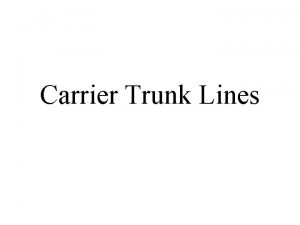NAVIGATION TRAINING Section 8 Position Lines and Fixes





















































- Slides: 53

NAVIGATION TRAINING Section 8 Position Lines and Fixes

Table of Contents • • • Section 1 Types of Navigation Section 2 Terrestial Coordinates Section 3 Charts Section 4 Compass Section 5 Nautical Publications Section 6 Navigational Aids

Table of Contents • • • Section 7 Buoyage Section 8 Position Lines and Fixes Section 9 Tides Section 10 Currents Section 11 Weather

Position Lines and Fixes

Position Lines • Position Lines (P/L) - A single observation that does not establish a fix, but does mean that ship’s position is somewhere along that line. • Label - After the position line is drawn from a charted object, a four digit time must be written above and parallel to the position line.

Position Lines • All Compass bearings that are to be plotted on the chart, must be corrected to True Bearings, allowing for any compass error, including deviation and variation, before plotting. • All True bearings/ courses taken from the chart, must be corrected for any compass error to obtain Compass Bearings/compass before use on radar or vessel’s magnetic compass.

Sources of Position Lines • A visual position line can be taken, using charted fixed navigational aids such as tanks, water towers, church steeples, spires, radio and TV towers, day marks, fixed navigation lights, flagpoles, or tangents to points of land. • In general fixing off floating objects, especially buoys, should be avoided, if there are fixed charted objects available.

Visual Position Line 1000

Radar Range Position Line

Position Line Measurement • Visual Bearings can be measured in: 1. Degrees Relative ( # # # 0 R ) 2. Degrees per Gyro Compass ( # # # ºG ) 3. Degrees Magnetic ( # # # 0 M ) • The navigator must convert any of these types of bearings to True before they can be plotted on the chart. Degrees True ( # # # 0 T)

Plotting and Labeling a Fix • Fix - The point where two or more position lines, taken at the same time, cross. This indicates the ship’s position on the chart. • Label - Use the four digit time next to the fix, it should be parallel to the bottom of the chart. The times of the individual position lines are not written.

Visual Position Fix

Visual Position Fix 1 Compass bearing of Abode Island bearing 009°Compass, deviation 1ºW, variation 23ºE, gives 030 º True Bearing

Visual Position Fix 2 Compass bearing of Grebe Island Light bearing 058 º Compass, deviation 1ºW, variation 23ºE, gives 080 º True Bearing

Visual Position Fix 3 Compass bearing of Pt. Atkinson Light bearing 098ºCompass, deviation 1ºW, variation 23º E, gives True Bearing of 120 º T

Visual Position Fix 4 Insert fix circle on intersection of position lines, and time of fix 1230

Cocked Hats • In a perfect world, with due allowance made for compass error, the three position lines will cross at one point. • However depending on the speed of the vessel, the proximity of the object from which a vessel is being fixed, and the accuracy of the bearing when taken, and other factors, it is far more likely that a cocked hat will be obtained. • The larger the cocked hat, the larger an error on one, two or all of the position lines is likely to be.

Cocked Hat In this example there is an error of 3ºE on the compass bearing of Point Atkinson Light and a cocked hat is formed. 1230

Cocked Hats • Where a plotted position is a cocked hat, and there is no obvious error (such as in calculation), it should be generally assumed the position of the vessel is the point in the cocked hat closest to the nearest danger. • Another position should be taken a soon as convenient to check on the position. An

Reducing Errors

Reducing Errors • When taking distances or ranges, always take the ranges ahead or astern first, to minimise errors (as these ranges will change quickest with the speed of the vessel) before taking ranges on the beam. • When taking compass bearings, always take the bearings on the beam first, to minimise errors (as these bearings will change quickest with the speed of the vessel) before taking bearings ahead or astern.

Radar Fixes

Radar Fixes • Radar bearings are subject to compass error. • Therefore the best way to obtain a fix by radar, is to take three radar distances off charted and identified objects.

Radar Position 1 Using radar: Grebe Is Electronic Bearing Marker showing 058 º M Variable Range Marker showing 0. 82’

Radar Position 2 From radar, plot position circle: Grebe Is Distance 0. 49 nm

Radar Position 3 Grebe Is Range 0. 82’ A second range of 0. 93’ off Eagle Is. would give fix Mark fix position and time. Best fix would be have third range. 1000

Radar Position 4 Radar bearing of Grebe Is. is 058 º compass Deviation 1ºW Variation 23ºE True Bearing 080 ºT which confirms ranges 1000

Electronic Position

Electronic Position • The GPS can give an accurate electronic position. • First check that the GPS information is live, and not on Dead Reckoning (which GPS reverts to with certain faults). • Also check that the HDOP figure is low - 1 is best.

Electronic Position 1 Note down Latitude and Longitude 49º 20. 38’N 123º 17. 23’W

Electronic Position 2 Plot Latitude and Longitude 49º 20. 38’N 123º 17. 23’W

Electronic Position 3 Insert fix symbol, and time 1000

Transits

Transits • Transits are the most accurate type of position line, when two charted objects line up. • Transits are one of the most valuable tools when close to dangers or the land. • Some transits are man made (intentional) and others are natural (coincidental).

Transits • The main benefits of transits are: 1. There is no compass deviation or variation. 2. They can be used when the vessel's motion interferes with the use of a compass. 3. They are instantaneous and can be monitored continuously. 4. They occur frequently when in confined waters.

Transits • Good transit - Beacon in line with lighthouse

Transits • Poor transit - Buoy in line with end of land. This may be inaccurate due to land changing due to tidal height and the buoy being set by tidal stream or current.

Transits A transit can give either a position line, or as shown, a heading to steer on from the northwest, before altering to about 045°T into Fishermans Cove 0945

Labeling Fixes Symbol Type Meaning Fix Accurate Visual Fix Accurate Fix obtained by electronic means DR EP Dead reckon position, advanced from previous fix. Estimated position. Most probable position of ship.

Dead Reckoning

Dead Reckoning • Dead Reckoning is the process of determining a ship’s approximate position by applying, from its last known position, a vector or a series of consecutive vectors representing the true courses steered and the distances run as determined by the ship’s speed and time, without considering the effects of wind and current. • From a known ship’s position, predicted future positions are plotted.

Dead Reckoning From ship’s known position at 1230, a future position is plotted for 1245, knowing vessel’s course and speed. DR 1245 1230

Dead Reckoning • Dead Reckoning is derived from DEDUCED, or DED, reckoning which was the process by which a vessel’s position was computed trigonometrically in relation to a known point of departure.

Estimated Position

Estimated Position From ship’s known position at 1230, a future position is plotted for 1245, knowing vessel’s course and speed, and allowing for set and drift of tide. EP 1245 1230

Parallel Indexing

Parallel Indexing • Parallel indexing is using the radar to monitor the track of a vessel along a preplanned course, maintaining a distance off a known charted object. • Where using a magnetic compass input to a radar, the true bearing will have to be corrected for variation and deviation before setting the Electronic Bearing Marker.

Parallel Indexing Find a radar conspicuous object on the chart. Draw a line parallel to the required course touching the object. Measure the distance between the course line and the parallel index line. That is the Cross Index range. 015ºT CIR 0. 32’

Parallel Indexing Offset and set up the Variable Range Marker to the distance off a conspicuous point of land that is required, and set the Electronic Bearing Marker to the required compass course. Course 017°C VRM 0. 18 nm EBL 017°C

Parallel Indexing The VRM should run up the EBL if the vessel is staying on track. Course 017°C VRM 0. 18 nm EBL 017°C

Time-Speed-Distance Calculations

Time-Speed-Distance Calculations • These calculations can be made using a nautical slide rule, electronic calculator, set of pre-computed tables, or the speed nomogram. D=S x. T where: D = distance traveled note: ( 1 nm = 2000 yds) S = speed in knots(nautical miles per hour) T = time in hours

Simple Rules • 3 Minute Rule Distance traveled in 3 minutes (yards) = Ship’s speed (knots) X 100 • 6 Minute Rule Distance traveled in 6 minutes (nm) = Ship’s Speed (knots) divided by 10.
 Articulacions semimobils
Articulacions semimobils Mr. spuffington fixes it himself
Mr. spuffington fixes it himself Fixes arzneimittelexanthem
Fixes arzneimittelexanthem Second position
Second position What is fundamental position
What is fundamental position Points lines planes worksheet
Points lines planes worksheet Parallel lines lesson
Parallel lines lesson Hidden lines take precedence over
Hidden lines take precedence over Parallel lines def
Parallel lines def Fundamental position vs anatomical position
Fundamental position vs anatomical position Draw two lines one connecting the planet at position a
Draw two lines one connecting the planet at position a New and navigation schemes selection of window
New and navigation schemes selection of window Stretch and squish navigation
Stretch and squish navigation Cognitive mapping and planning for visual navigation
Cognitive mapping and planning for visual navigation Navigation and seamanship
Navigation and seamanship Navigation using speed, distance and time calculations
Navigation using speed, distance and time calculations What is a draw in land navigation
What is a draw in land navigation 3-2 properties of parallel lines part 1 answers
3-2 properties of parallel lines part 1 answers How to tell if two lines are parallel geometry
How to tell if two lines are parallel geometry Parallel lines and transversals assignment
Parallel lines and transversals assignment Geometry 3-1 parallel lines and transversals
Geometry 3-1 parallel lines and transversals Intersecting lines that are not perpendicular
Intersecting lines that are not perpendicular Kraissl lines vs langer lines
Kraissl lines vs langer lines Horizontal line drawings
Horizontal line drawings Load lines training
Load lines training Half vier
Half vier Describing energy section 2 answers
Describing energy section 2 answers Vor navigation quiz
Vor navigation quiz Us coast guard navigation center
Us coast guard navigation center Catzoc ecdis definition
Catzoc ecdis definition Daytime aid to navigation
Daytime aid to navigation Cyclone global navigation satellite system
Cyclone global navigation satellite system What is terrestrial navigation
What is terrestrial navigation Strapdown inertial navigation system
Strapdown inertial navigation system Joint navigation conference
Joint navigation conference Effects of navigation acts
Effects of navigation acts Applications of trigonometry in navigation
Applications of trigonometry in navigation Hdg navigation
Hdg navigation Qoverview
Qoverview Different types of terrain
Different types of terrain What is a draw in land navigation
What is a draw in land navigation Daytime aid to navigation
Daytime aid to navigation Global navigation solutions
Global navigation solutions Navcen
Navcen Slide navigation pane
Slide navigation pane Mobile robot navigation with human interface device
Mobile robot navigation with human interface device Navigation adalah
Navigation adalah Sun stone navigation
Sun stone navigation Carm navigation
Carm navigation Saddle terrain feature
Saddle terrain feature Performance based navigation
Performance based navigation Hyperbolic navigation
Hyperbolic navigation Pbn endorsement
Pbn endorsement Decca navigator system
Decca navigator system
